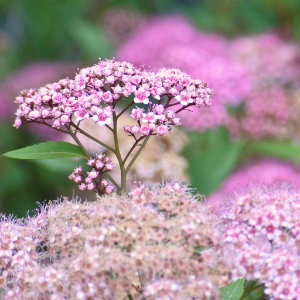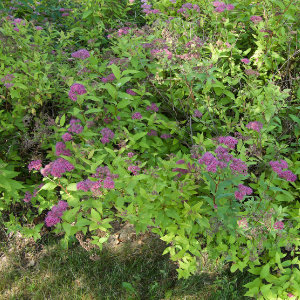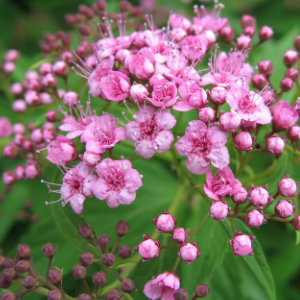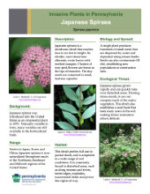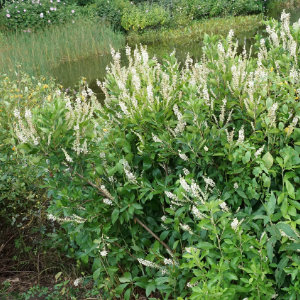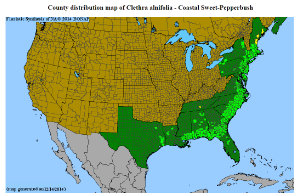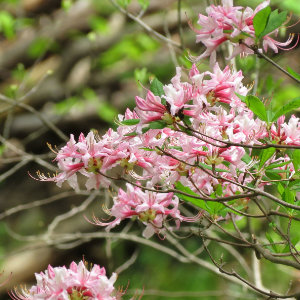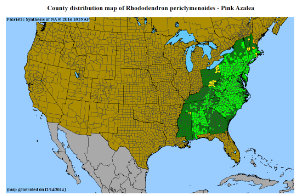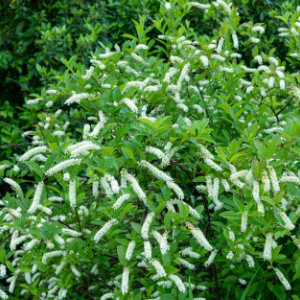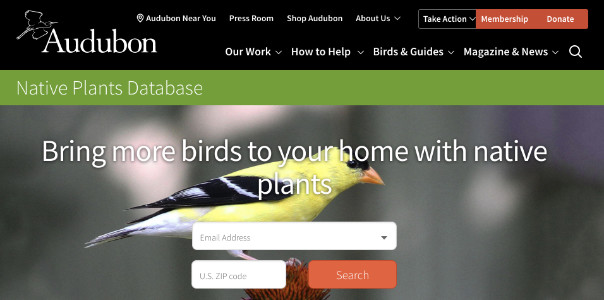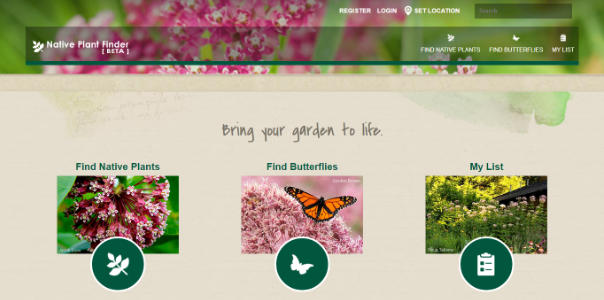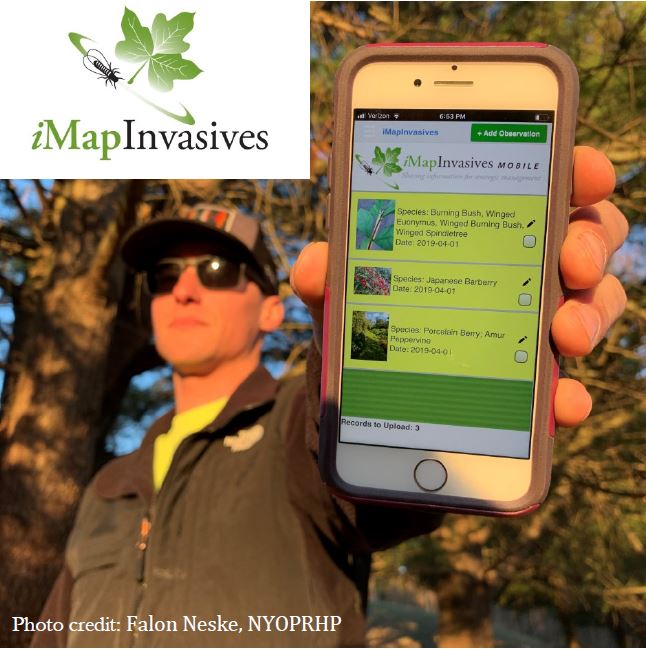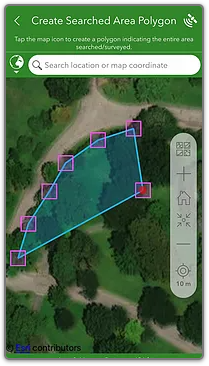Japanese Spiraea
Gardeners may pride themselves on having Japanese spiraea (Spiraea japonica) in their home landscapes because of its showy blooms. However, Japanese spiraea is actually considered an invasive species that escapes into natural areas and outcompetes native vegetation.
- Credit: F. D. Richards, “Spiraea japonica ‘Gold Mound’ (Spirea) 2020 photo”, CC BY-SA 2.0
- Credit: Koichi Oda, “Spiraea japonica”, CC BY-SA 2.0
- Credit: F. D. Richards, “Spiraea japonica ‘Goldflame’ (Spirea) 2020 photo”, CC BY-SA 2.0
Identification
Japanese spiraea is a deciduous shrub that can grow to a height of 4-6 feet. The leaves are ovate and alternating on the stem; its eye-catching blooms are a rosy-pink color and in rare cases can also be white. Flowers only occur on new wood. Japanese spiraea grows in an upright, low and broadly mounded form, creating a dense thicket of thin wiry stems. In addition to residential and commercial spaces where it’s purposefully planted, Japanese spiraea can be found growing in natural spaces that receive full sun to partial shade such as along streams and rivers, forest edges, roadsides, fields, and utility rights-of-way.
Japanese spiraea may be confused with several species of native spiraea including:
- Steeplebush (Spiraea tomentosa)
- White meadowsweet (Spiraea alba)
- Broad-leaf meadowsweet (Spiraea latifolia)
Additional information on how to identify Japanese spiraea can be found online.
Ecological Threat
20 Invasive Shrubs to Avoid – Credit: Major Rex
Japanese spiraea can rapidly spread from cultivation in yards and gardens and invade natural areas where it can crowd out native species by forming dense clumps or stands. The lack of sufficient native vegetation in natural spaces is detrimental to local wildlife and insect populations that are adapted to only use native plants as their source of food. The seeds will remain viable in the soil for many years. Continued management is required to control Japanese spirea.
Control and Removal
If Japanese spiraea is present on your property, consider removal and management options. The following resources provide valuable information and tips.
Japanese Spiraea Species Spotlight – Credit: Lower Hudson PRISM
Other management tips can be found at:
Plant Native Alternatives
*This list is not comprehensive, but rather provides a sampling of species available for purchase from retailers located in Pennsylvania and/or surrounding states. All native plant distribution maps (below) are provided by the Biota of North America Program.
- Credit: Plant Image Library, “Clethra alnifolia ‘Hummingbird’ x ‘Anne Bidwell’”, CC BY-SA 2.0
Summersweet Clethra (Clethra alnifolia)
Summersweet clethra can be grown in full sun to part shade, though will do best in partly shady areas. It prefers to be in average, medium to wet soils and requires a space that has consistent moisture.
- Credit: Katja Schulz, “Pinxterbloom Azalea”, CC BY 2.0
Pinxterbloom Azalea (Clethra alnifolia)
Pinxterbloom azalea prefers to grow in areas where dappled sunlight is present and in soils that are organically rich and well-drained. Areas with poor drainage will lead to root rot, so in heavy clay soils, consider using raised beds when planting this species.
- Credit: Puddin Tain, “Virginia Sweetspire 1 NBG”, CC BY-SA 2.0
Virginia Sweetspire (Itea virginica)
Virginia sweetspire is easily grown in average, medium to wet, well-drained soils. It prefers to be in areas that receive full sun to part shade. Consider using this plant in a rain garden.
Learn More and Take Action
Why are Native Plants Important?
Learn more about the importance of planting native plants by reviewing the following resources. And remember, planting even one native plant on your property is a tremendous benefit to wildlife and the environment!
Doug Tallamy Explains, “Why Native Plants?”
Credit: Catherine Zimmerman
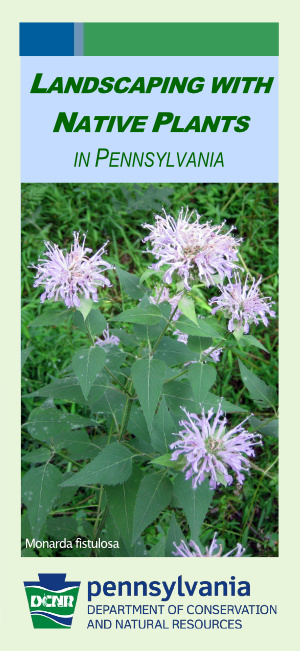
Landscaping with Native Plants in Pennsylvania
Credit: PA Department of Conservation and Natural Resources
Professor Doug Tallamy on Sustainable Landscaping
Credit: University of Delaware
Discover Native Plants.
Learn what plants are native to your area by using the National Wildlife Federation’s Native Plant Finder or the Audubon’s Native Plants Database. Both programs are easy to use - just type in your zip code and a list of native plants is provided to you.
Record Invasive Species Findings with iMapInvasives.
If you find invasive plants and animals in natural areas such as parks, forests, and meadows, please report them to iMapInvasives, an online tool used by natural resource professionals and citizen scientists to record locations of invasive species The iMapInvasives program is useful in understanding species distributions statewide and is used by land managers to prioritize locations to conduct treatment efforts. In Pennsylvania, the iMapInvasives program is administered by the Western Pennsylvania Conservancy and the Pennsylvania Natural Heritage Program and is financially supported by the Great Lakes Restoration Initiative. At the national level, iMapInvasives is administered by NatureServe.
A free registered user account is needed in order to contribute and view data in iMapInvasives. Register here.
How to create a presence record in iMapInvasives online (video)
Connect with Our Experts
Please direct any questions or comments regarding this species profile to Amy Jewitt, Invasive Species Coordinator, or Mary Walsh, Aquatic Zoology Coordinator.


